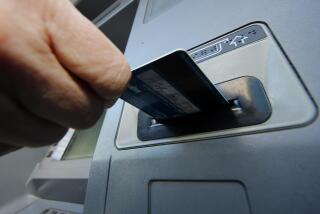Ask Laz: Safer credit cards are coming, but they can still be hacked
Wally correctly notes that new credit cards have chips embedded in the plastic for greater security. But he points out that thereâs still a magnetic strip on the back.
âHow is this safer,â Wally asks, âeven with the chip?â
Short answer: Itâs not.
But itâs a step in the right direction.
ASK LAZ: Smart answers to consumer questions
The United States lags the rest of the developed world in switching to more-secure plastic. Europe and Asia, for example, already are well ahead of us in rolling out so-called chip-and-PIN cards.
These cards arenât hack-proof, but theyâre much tougher for scammers to hijack because they need to break into the chip, where the dataâs stored, and to get the userâs personal identification number.
Squabbling among card issuers and merchants over who should bear the cost of new technology for chip-and-PIN cards has slowed their introduction to U.S. consumers. Thereâs now a deadline to switch to the new standard by October.
However, all plastic, at least for the time being, will still come with magnetic strips so that retailers will have time to get new card readers in place. From a security standpoint, this means our plastic will be just as hackable as ever.
Eventually, though, weâll reach a point where the magnetic strips will go away and weâll join the rest of the world in improved card technology.
However, consumers wonât be out of the woods even then. Donât forget: Most recent hacks have involved bad guys sneaking into corporate computers, where card numbers and other information may be stored.
Until businesses fortify their own defenses, consumers will remain vulnerable to data breaches.
If you have a consumer question, email me at [email protected] or contact me via Twitter @Davidlaz
More to Read
Inside the business of entertainment
The Wide Shot brings you news, analysis and insights on everything from streaming wars to production â and what it all means for the future.
You may occasionally receive promotional content from the Los Angeles Times.











